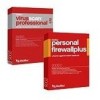McAfee VLF09E002RAA User Guide - Page 91
Matches a tab character.
 |
UPC - 731944541938
View all McAfee VLF09E002RAA manuals
Add to My Manuals
Save this manual to your list of manuals |
Page 91 highlights
Working With Blocked and Accepted Messages \D Matches a non-digit character. Equivalent to [^0-9]. \f Matches a form-feed character. \n Matches a new line character. \r Matches a carriage return character. \s Matches any white space including space, tab, form-feed, etc. Equivalent to "[ \f\n\r\t\v]". \S Matches any nonwhite space character. Equivalent to "[^ \f\n\r\t\v]". \t Matches a tab character. \v Matches a vertical tab character. \w Matches any word character including underscore. Equivalent to "[A-Za-z0-9_]". \W Matches any non-word character. Equivalent to "[^A-Za-z0-9_]". \num Matches num, where num is a positive integer. A reference back to remembered matches. For example, "(.)\1" matches two consecutive identical characters. \n Matches n, where n is an octal escape value. Octal escape values must be 1, 2, or 3 digits long. For example, "\11" and "\011" both match a tab character. "\0011" is the equivalent of "\001" & "1". Octal escape values must not exceed 256. If they do, only the first two digits comprise the expression. Allows ASCII codes to be used in regular expressions. 48 McAfee® SpamKiller® software version 7.0















